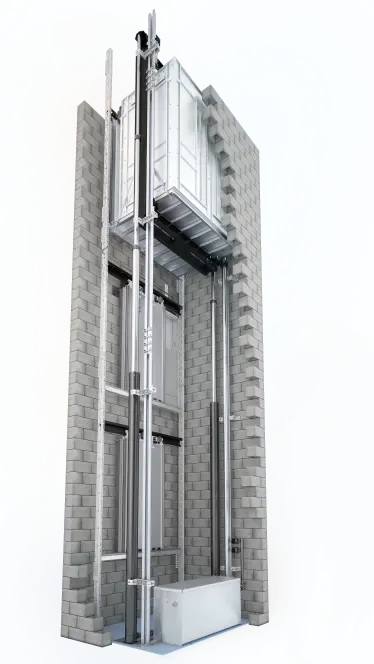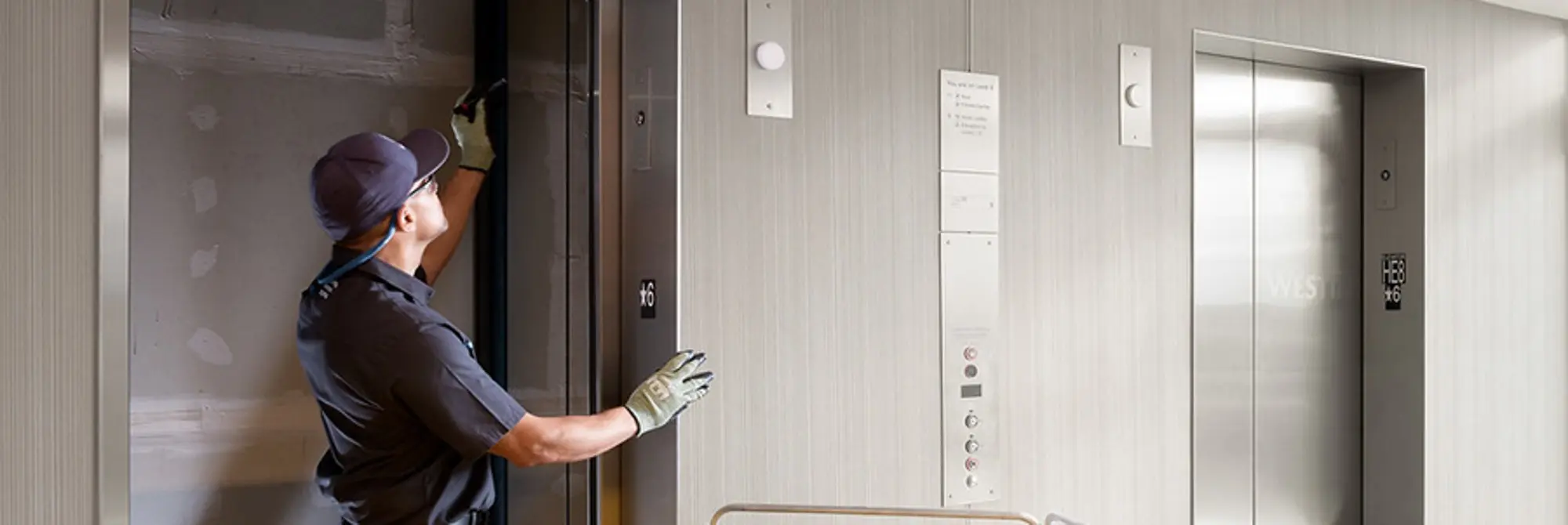The hoistway is also commonly referred to as the shaftway or shaft, but no matter what you call it, it serves the same purpose! The hoistway also houses all elevator equipment such as the rail guides, cables and belts. But when it comes to equipment specifically made for the hoistway, we can narrow that down to the hoistway door and hoistway blind.
Hoistway Door:
The hoistway door is the entrance point into the elevator cabin (aka car or cab) and is visible in the lobby or hallway, with doors closed. Once the elevator car arrives at the floor, the door operator and clutch system will engage both the car door and the hoistway door and will only open if the elevator car is level at the landing. It adds an extra layer of safety so that passengers cannot access the hoistway unless an elevator cab has leveled at their floor, ready for them to hop on.
Hoistway Door Lock Monitor:
As a public safety enhancement required by most states or jurisdictions, the hoistway door lock monitor (HDLM) prevents automatic operation if it detects faulty safety circuits.
Per ASME A17.3 -2015 Safety Code for Existing Elevators and Escalators, it is required to have a monitoring system that prevents automatic operation of passenger and freight elevator with faulty door contact circuits. The door position, hall door lock, and gate switch operation shall be monitored to ensure no ground or short might cause an unsafe condition.
The goal of the monitoring device is to ensure that if one of the safety circuits becomes faulty, the car will not continue in normal operation. It will not move off the floor it is at, the hall/car doors will open. Then the car will shut down with the doors open or closed in the case of hydraulic elevators.
Tags: Entrance, Doors, Hoistway
Hoistway Blind:
Also known as a blind hoistway, this is the portion of a hoistway where there is no door. Simply put, this type of elevator shaft will not have a hoistway door for entry at each floor. For example, there could be a hoistway door at the first floor and then no door at all until the top floor.

 United States
United States


